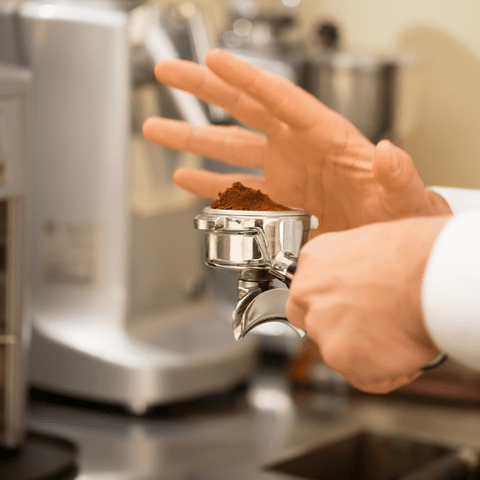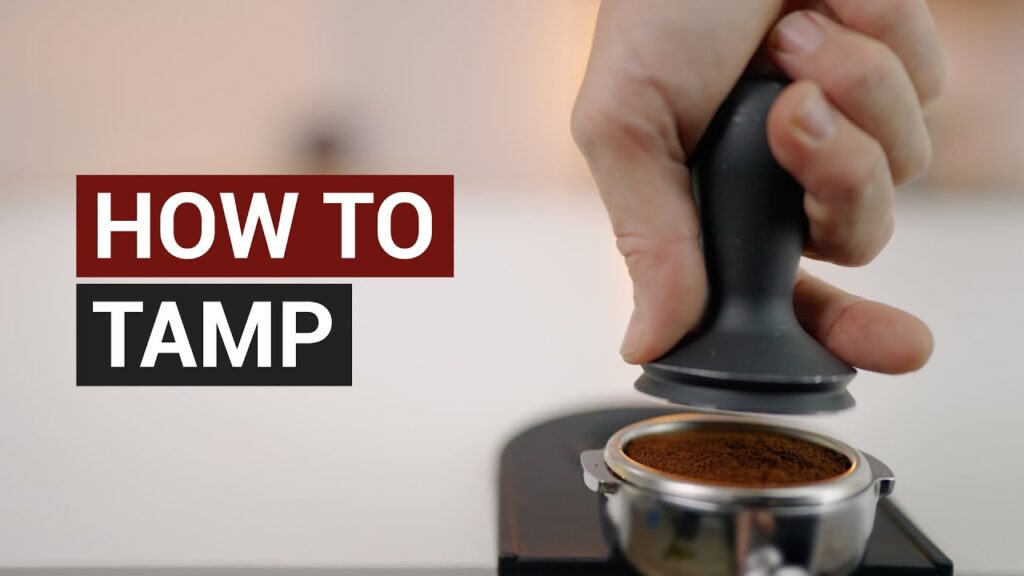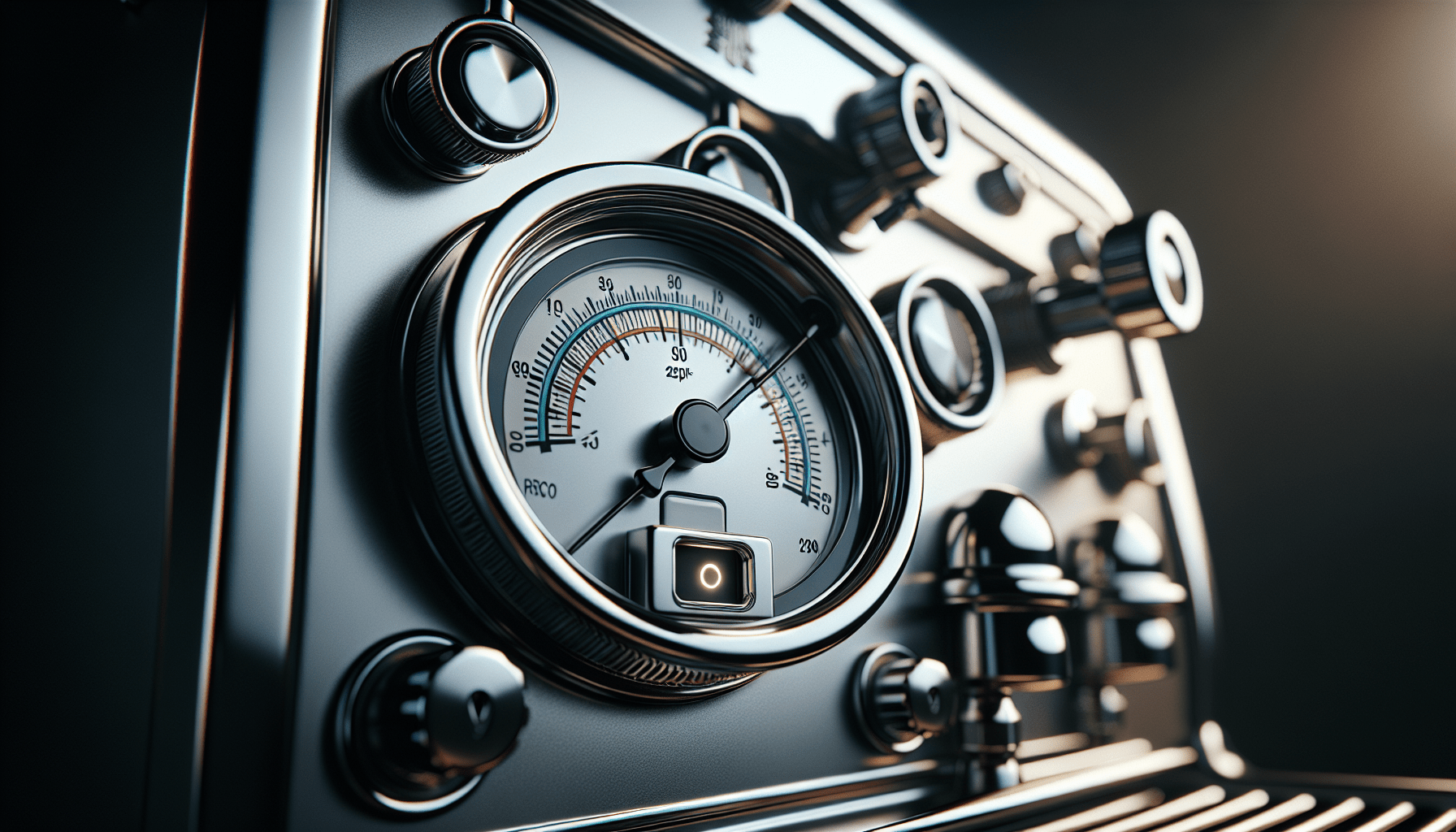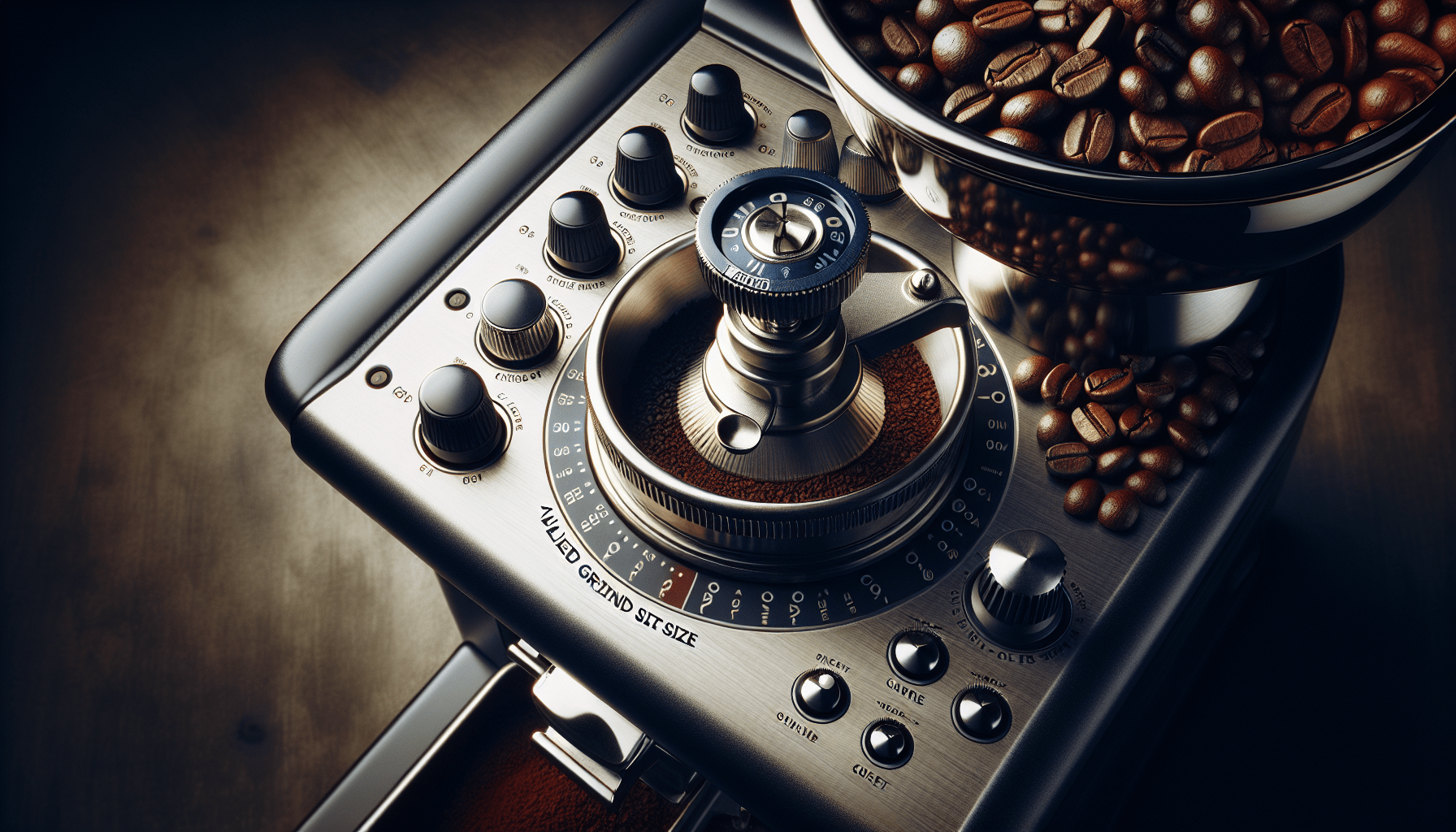Are you in search of the perfect espresso shot? Look no further, because in this article, we will guide you through the proper technique for tamping coffee grounds in a semi-automatic espresso machine. Tamping is a crucial step in the espresso-making process, as it ensures even extraction and optimal flavor. With our friendly tips and tricks, you’ll soon be creating delicious, barista-quality espresso right in the comfort of your own home. So grab your favorite coffee beans and get ready to embark on your brewing journey!
Understanding the Importance of Tamping
The role of tamping in espresso extraction
Tamping plays a crucial role in the process of espresso extraction. When you tamp the coffee grounds, you are compacting them into a uniform puck shape in the portafilter. This creates a pathway for the water to evenly flow through, allowing for optimal extraction of the flavors and aromas from the coffee grounds. Tamping ensures that the water passes through the coffee at a consistent rate, leading to a well-balanced and flavorful espresso shot.
Why proper tamping technique is crucial
Proper tamping technique is essential to achieve the best extraction results. When the coffee grounds are tamped incorrectly, several issues can arise, affecting the quality of the espresso shot. Insufficient tamping can result in under-extraction, where the water flows too quickly through the coffee, leading to a weak and sour-tasting shot. On the other hand, over-tamping can cause channeling, where the water finds paths of least resistance, resulting in an uneven extraction and potentially bitter flavors. To ensure consistent and delicious espresso, mastering the art of tamping is essential.
Selecting the Right Tamper
Choosing the correct size
Choosing the correct size tamper is crucial for achieving a proper tamp. The tamper should match the size of your portafilter basket, allowing for full coverage and even compression of the coffee grounds. Using a tamper that is too small or too large can result in an uneven tamp, leading to inconsistent extraction. Measure the diameter of your portafilter basket and select a tamper that matches it precisely.
Evaluating the weight and feel
The weight and feel of a tamper can greatly affect your tamping technique. Ideally, the tamper should have a substantial weight that aids in applying consistent pressure. It should also feel comfortable in your hand, allowing for a firm grip and control. Experiment with different tampers to find the weight and feel that suits you best, as it can vary from person to person.
Considering a calibrated tamper
A calibrated tamper is a great tool for ensuring consistency in your tamping technique. These tampers have a mechanism that allows you to set a specific depth for your tamp, ensuring uniformity across multiple shots. While not necessary for beginners, a calibrated tamper can be a valuable investment for those seeking precision and consistency in their espresso extraction.

Preparing the Coffee Grounds
Grinding the coffee to the correct fineness
The fineness of the coffee grounds is crucial for a successful espresso extraction. The grind size should be fine enough to allow for optimal extraction, without being too fine and causing over-extraction or channeling. Adjust your grinder to achieve a uniform and fine grind that suits your espresso machine. Remember to make small adjustments and experiment until you find the ideal grind size for your coffee beans.
Distributing the coffee evenly in the portafilter
Once you have the right grind size, it’s important to distribute the coffee grounds evenly in the portafilter. Uneven distribution can lead to inconsistencies in extraction, as water will flow more easily through areas with less coffee. Use a distribution tool or the back of a spoon to level the coffee grounds, ensuring an even and flat surface. This step is critical for obtaining a balanced extraction and preventing channeling.
Avoiding overfilling or underfilling the portafilter
Filling the portafilter with the correct amount of coffee grounds is essential for a proper tamp. Overfilling can result in compression difficulties and uneven extraction, while underfilling can lead to weak and watery shots. Aim to fill the portafilter just below the rim, allowing room for the coffee grounds to expand during the tamping process. Experiment with different doses to find the right amount for your espresso preferences.
The Tamping Technique
Positioning the tamper correctly
To start the tamping process, position the tamper perpendicular to the portafilter. This means the handle should be at a 90-degree angle to the counter or tabletop. It’s important to ensure that the tamper is centered in the portafilter to achieve an even tamp. Take a moment to visually align the tamper and make any necessary adjustments before applying pressure.
Applying even and consistent pressure
When you begin tamping, apply even and consistent pressure downward. The force should be steady and firm but avoid using excessive force that can lead to over-tamping. Tamp with your forearm and wrist in a straight line, keeping your elbow above the portafilter and applying downward pressure evenly across the coffee grounds. This technique helps to achieve a uniform, level surface for optimal extraction.
Understanding the proper depth of the tamp
The depth of your tamp is essential for a successful extraction. Too shallow of a tamp can result in under-extraction, while too deep can lead to over-extraction. Aim for a consistent depth each time, usually around ⅓ to ½ inch. You can adjust this depth slightly based on personal preference and the characteristics of the coffee beans. Consistency is key to ensure repeatable and balanced extraction.
Avoiding side-to-side or rocking motions
During the tamping process, it’s important to avoid any side-to-side or rocking motions. These movements can lead to uneven tamping, resulting in channeling and inconsistent extraction. Keep the tamper level and apply downward pressure in a straight line. Maintaining a stable and perpendicular angle throughout the tamp helps in achieving a uniform density across the coffee puck.
Common mistakes to avoid
Some common tamping mistakes to avoid include pressing too hard, tamping at an angle, or using a twisting motion. Remember that tamping should be a controlled and deliberate action, not a forceful one. Applying excessive pressure can lead to over-extraction and potential damage to your espresso machine. Keeping a steady and level tamp with even pressure will help deliver excellent extraction results.

Checking the Tamp
Removing any excess coffee grounds
After tamping, gently tap the sides of the portafilter to remove any excess coffee grounds that may have stuck to the sides. Excess coffee can impede proper extraction, leading to channeling or uneven water flow. Use a clean towel or brush to wipe away any loose coffee grounds, ensuring a clean and tidy portafilter before inserting it into the espresso machine.
Inspecting the surface of the coffee puck
Take a moment to inspect the surface of the coffee puck after tamping. It should be level and uniform, with no unevenness or gaps. A properly tamped puck will appear smooth and free of cracks. If you notice any inconsistencies, such as uneven depths or visible gaps, this may indicate an issue with your tamping technique or distribution. Adjust your technique and make necessary corrections until you achieve a level and uniformly compressed puck.
Ensuring a level and uniformly compressed puck
A level and uniformly compressed coffee puck is essential for ideal extraction. This ensures that the water flows evenly through the coffee, extracting flavors and aromas consistently. If the puck is unevenly compressed or has gaps, water can flow through these areas more quickly, resulting in less desirable extraction. Pay attention to your tamping technique and make adjustments as needed to achieve a well-formed and densely packed coffee puck.
Optimizing Tamping for Different Coffees
Adjusting tamping pressure for different roast levels
Different roast levels require adjustments in tamping pressure to achieve optimal extraction. Lighter roasts tend to be denser and require slightly more tamping pressure, while darker roasts are typically less dense and may require slightly less pressure. Experiment and make small adjustments to find the right balance for different roast levels. Remember that consistency is key, so ensure that you maintain the same tamping pressure throughout the extraction process.
Adapting tamping technique for different coffee origins
Coffee beans from different origins can have varying densities and moisture levels, which can impact the tamping technique. For example, beans from Central America may be denser than those from Africa. Experiment with adjusting your tamping pressure or depth based on the specific characteristics of the coffee beans. By adapting your tamping technique to the coffee’s origins, you can enhance the extraction process and highlight the unique flavors of each region.

Troubleshooting Tamping Issues
Identifying under-extraction and over-extraction signs
Under-extraction and over-extraction signs can help identify potential tamping issues. Under-extracted shots tend to be weak and acidic, lacking body and flavor. This may indicate insufficient tamping pressure or uneven distribution of coffee grounds. Over-extracted shots, on the other hand, often have a bitter taste and lack sweetness. This can be caused by excessive tamping pressure or overfilled portafilters. By understanding these signs, you can adjust your tamping technique accordingly to ensure a balanced and delicious espresso.
Addressing channeling or uneven extraction
If you notice channeling or uneven extraction in your shots, it may be a result of improper tamping technique. Channeling occurs when water finds paths of least resistance through the coffee puck, leading to an uneven extraction. Uneven extraction can result in variations in flavor and strength throughout the shot. Analyze your tamping technique, ensuring that you tamp evenly and avoid any rocking or side-to-side motions. Properly distributed and densely packed coffee grounds are vital to preventing channeling and achieving a uniform extraction.
Adjusting tamping technique based on extraction results
The extraction results of your espresso shots can guide you in adjusting your tamping technique. If you consistently experience under-extraction or over-extraction, evaluate your tamping pressure, depth, and distribution techniques. Make small adjustments and observe the changes in the flavor profile and mouthfeel of your espresso. It may take some trial and error, but with practice and attention to detail, you can refine your tamping technique to achieve exceptional espresso extraction.
Practicing and Refining Tamping Technique
Repeating tamping exercises
To improve your tamping technique, repetition is key. Practice tamping regularly to develop muscle memory and consistency. Set aside time to work on your tamping skills, focusing on the correct body position, pressure, and depth. By honing your technique through repetition, you’ll gradually enhance your ability to achieve even and consistently excellent extractions.
Seeking feedback from experienced baristas
Another valuable way to refine your tamping technique is by seeking feedback from experienced baristas. Baristas with years of experience can provide valuable insights and tips to help you improve your tamping skills. Approach them with humility and a willingness to learn, and don’t hesitate to ask for guidance or feedback. Their expertise can greatly assist you in mastering the art of tamping.
Experimenting with different variations and methods
Tamping is an art form that allows for creativity and experimentation. Once you have mastered the basic technique, don’t be afraid to explore different variations and methods. Try adjusting the tamping pressure, depth, or distribution patterns to see how they affect the extraction. Keep a journal to record your findings and the resulting taste profiles. Through experimentation, you can discover your unique tamping style and refine it further to achieve your desired espresso flavors.

Maintaining Tamper Hygiene
Cleaning and drying the tamper after each use
Maintaining proper tamper hygiene is crucial to ensure the longevity and cleanliness of your equipment. After each use, clean your tamper thoroughly, removing any residual coffee grounds. Rinse it with warm water and mild soap, paying attention to hard-to-reach areas. Dry it completely before storing to prevent any mold or bacterial growth. Regular cleaning not only promotes hygiene but also helps maintain the quality of your espresso shots.
Avoiding cross-contamination of flavors
To avoid cross-contamination of flavors between different coffee beans, it’s important to keep your tamper clean and free from residue. Residual coffee grounds can mix with different coffee beans, affecting the taste and aroma of your espresso shots. Make it a habit to clean your tamper thoroughly and remove any grounds before using it with a different coffee variety. This practice ensures that you can fully appreciate the flavors and nuances of each coffee.
Storing the tamper properly
Proper storage of your tamper is essential to protect it from damage and maintain its functionality. Store the tamper in a clean and dry place, away from heat and direct sunlight. Avoid placing heavy objects on top of it to prevent any deformation. If your tamper came with a protective case, use it to provide additional protection. Storing your tamper properly not only prolongs its lifespan but also ensures that it’s always ready for use when you need it.
Conclusion
The importance of mastering tamping technique
Mastering the technique of tamping is of utmost importance in the pursuit of exceptional espresso. By understanding the role of tamping in espresso extraction and employing proper tamping technique, you can enhance the quality and flavor of your espresso shots. Consistency, evenness, and precision in tamping contribute to a balanced extraction, showcasing the best characteristics of each coffee bean.
Enhancing espresso quality through proper tamping
Proper tamping technique is a vital element in the overall coffee brewing process. It ensures that the water flows uniformly through the coffee, extracting the optimal flavors and aromas. By selecting the right tamper, preparing the coffee grounds correctly, and practicing tamping with attention to detail, you can refine your technique and elevate the quality of your espresso. With dedication and practice, you’ll be able to consistently create delicious, well-extracted shots that showcase the full potential of your coffee beans.




